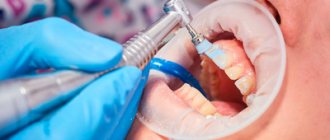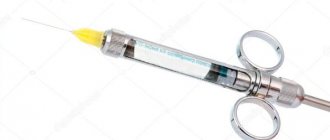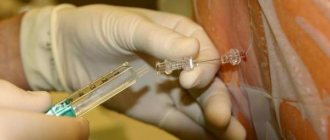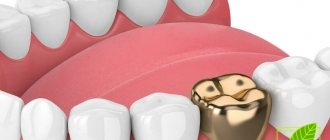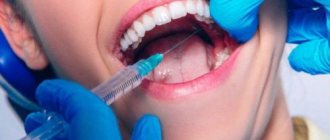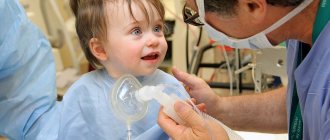Indications for tooth extraction
Extirpation is done when therapeutic treatment is impossible or before prosthetics. It can be planned or emergency. It is carried out using a simple or complex method. In the first case, the dental unit is removed from the socket using forceps, and in the second, dissection of the gums, alveolar bone, and sawing of the roots into fragments may be required.
Indications for emergency surgery:
- the presence of purulent inflammation, fistula, cyst;
- acute pain that is not relieved by medication;
- fracture of the crown, root.
Planned extraction is done if:
- advanced caries, if the area of the carious cavity of the crown is more than 70 percent, the pathology has spread to the root part;
- pulpitis in a complex root system, when it is impossible to properly clean the canals (usually in a figure eight);
- periodontitis with stage 3 or 4 mobility;
- third molars that interfere with neighboring ones cause changes in bite, facial asymmetry, neurological pain, pericoronitis;
- supernumerary, dystopic, impacted teeth, which cause various disorders in the dental system;
- orthodontic indications for prosthetics, installation of braces.
Experienced dentists always strive to preserve the integrity of the dentition, so radical measures are usually taken in the absence of a positive result of therapeutic treatment. After the procedure and recovery period, acute pain goes away, but chewing function worsens when removing molars or aesthetics when extracting incisors or canines.
The relationship between ENT organs and dental health
30.10.2017
Author: Dentist-periodontist Tamara Valerievna Kudzieva
Often, patients are faced with a situation where doctors have difficulty making a diagnosis due to the proximity of certain organs, and the patient is forced to turn to related specialists in order to avoid an inaccurate diagnosis.
Dental science is no exception. The diagnosis, etiology, i.e. is quite common. The cause of which dentists sometimes find it difficult to determine. Namely, inflammation of the maxillary (maxillary) sinus - sinusitis. Or a diagnosis whose name is more familiar - sinusitis. Patients are often confused about which doctor to see, a dentist or an ENT specialist.
Let's figure out why often an ENT doctor and a dentist cannot share this diagnosis.
First, let's give a definition and understand what the maxillary sinus is:
The maxillary sinus is a cavity formation in the upper jaw, lined with mucous membrane.
The function of the maxillary sinus is to warm and purify inhaled air. When an infection penetrates, one way or another, the mucous membrane of the sinus becomes inflamed, this process is called sinusitis (sinusitis). The patient usually complains of a feeling of nasal congestion, the presence of purulent exudate (discharged fluid), headaches, fever, pain in the projection of the sinus when tilting the head and palpation.
The reasons for the development of sinusitis can be odontogenic (due to the tooth) and non-odontogenic.
Non-odontogenic causes are most often associated with complications of colds or viral diseases, rhinitis. A specialist in ENT diseases works directly with this diagnosis.
We will dwell in more detail on the odontogenic cause of sinusitis:
As noted above, the cause of the development of this type of inflammation is an infected tooth.
This is due to the anatomical features of the structure of the upper jaw, since the roots of the teeth are located close to the sinus or even directly in it:
Thus, in the presence of a chronic inflammatory process in the canals of the teeth of the upper jaw, this infection spreads to the mucous membrane of the sinus, causing its inflammation. If there is an odontogenic cause for the development of sinusitis, it is not advisable to treat only the sinus by an ENT doctor, since this treatment will not give a long-term effect. It is necessary to eliminate the cause of inflammation - an infected tooth. And often, such unpleasant manipulations as punctures, rinsing, and prescribing antibacterial agents do not bring the desired result.
And therefore, competent ENT specialists, before starting treatment, must refer the patient to a dentist to exclude an odontogenic cause for the development of sinusitis.
If the inflammation is caused by a tooth, the dentist first needs to assess the feasibility of treating and preserving the tooth. If the prospect of treatment is assessed as favorable, then the endodontist performs high-quality root canal treatment to eliminate the infection. Before permanent filling of the canals, you may need to temporarily fill them with agents that have an antiseptic effect. And then, having seen the positive dynamics, seal the tooth hermetically. If the tooth is severely damaged, or there is no possibility of passage of the canals (sclerosis, severe curvature, root perforation, false passage, broken instrument), then such a tooth must be removed.
After eliminating the cause, after a couple of months, a control CT scan is performed to make sure that the sinus has begun to recover.
It is important to note that all sinuses communicate with each other; therefore, an infection from the maxillary sinus, in the absence of proper treatment, can spread throughout the entire sinus system, which greatly complicates treatment.
Thus, a competent approach to treatment and timely redirection to a suitable specialist will prevent an incorrect diagnosis and, as a result, incorrect treatment tactics. And therefore, save the patient’s time and finances.
Anesthesia for tooth extraction
There are several types of pain relief:
- local anesthetics that are injected into the gums;
- drugs for general anesthesia injected into a vein;
- inhalation anesthesia;
- nitrous oxide sedation.
The choice of method depends on what kind of operation is being performed: simple or complex. Removing the front teeth is considered the easiest. They have one root and are easily dislocated with forceps. For pain relief, a simple “freezing” with a local anesthetic is sufficient.
Removing lower wisdom teeth is the most difficult procedure, especially if there are abnormalities in growth and location. It will require cutting the gums, cutting off part of the bone, sawing and step-by-step removal of root fragments. The operation can last more than 1 hour, so it is often performed under anesthesia.
Sedation with nitrous oxide does not exclude local anesthesia. It relaxes well, puts the patient into a state of half-asleep, and reduces fear. Often used in pediatric dentistry to remove baby teeth.
Drugs injected into a vein completely turn off consciousness for a certain period of time. The duration of anesthesia is adjusted by the dosage of the medication.
Inhalation anesthesia allows you to control the dose of the drug directly during the procedure. This ensures high-quality and safe general anesthesia and minimizes the risk of side effects.
Why a tooth might start to hurt
- Toothache can be a consequence of periostitis, periodontitis, pulpitis or caries. The affected pulp begins to increase in size, presses against the walls of the tooth, and the nerve endings are compressed. Painful symptoms can only be eliminated with painkillers.
- Inflammation of the gums can also provoke toothache. Difficulty in the eruption of wisdom teeth can cause not only inflammation, but also severe swelling, and pain can radiate to nearby teeth, the ear and throat.
- Toothache can trigger a migraine if it radiates to the head. In this case, it is necessary to get rid of the wisdom tooth. Typically, the migraine will go away quickly after this.
Stages of the procedure
Simple extirpation is carried out using forceps, consisting of cheeks, a handle, and a lock. It is performed if the coronal part is well preserved and there are no various complications. Incisors and canines on the upper jaw are removed with straight forceps, on the lower jaw - curved at an angle of 90 degrees. S-shaped instruments are used to extract premolars and molars.
Removing an upper wisdom tooth is easier than on the lower jaw, since it has an even, small root, so a simple operation is performed if there are no complications. The lower jaw bone is denser and more massive, and the root part of the figure eight is complex.
A simple extraction consists of several steps:
- local anesthesia;
- antiseptic treatment;
- application of forceps followed by advancement of the cheeks under the gums and fixation;
- rocking, dislocation and extraction of a dental unit from the socket.
Complex extirpation requires the use of several different instruments, takes a longer time, injures nearby tissues, is dangerous for complications, and the rehabilitation process lasts longer. Pain relief during tooth extraction, especially eights, can be general. The surgeon uses a scalpel or laser, drill, elevator, excavator, and other instruments.
Step-by-step complex removal:
- local or general anesthesia;
- antiseptic treatment;
- dissection of the gums, separation of the flap from dental and bone tissues;
- if necessary, drilling or cutting off part of the bone, dividing the root into several fragments;
- extraction of a dental unit in whole or in parts;
- bleeding stop;
- application of antibacterial and anti-inflammatory drugs;
- suturing the gum.
To stitch soft tissues, self-absorbing or non-absorbable threads are used, which are removed after 7-10 days.
Is it possible to get infected at a dental clinic?
Effective measures can ensure proper safety and eliminate the possibility of infection:
- Inlet filter – patients’ temperatures are measured to detect abnormalities;
- Proper distance between visitors is ensured;
- The air is disinfected and disinfected;
- The temperature of medical workers is measured twice a day.
Possible complications
When using an elevator, an adjacent molar or premolar may be displaced or even broken. In the upper jaw, it is possible to push a fragment into the maxillary sinus. Fractures of the lower jaw are very rare.
Immediately after surgery, swelling occurs, and after the anesthetic wears off, pain occurs. Such phenomena disappear within one or several days, depending on the complexity of the procedure performed. Temporary numbness of soft tissues in the operated area, increased temperature, and bleeding are possible.
Pus in the hole after tooth extraction appears due to alveolitis. When a blood clot, which protects against the entry of bacteria and food, falls out of the socket, the pain intensifies and inflammation develops. In this case, you need to contact the doctor who performed the operation.
How to relieve toothache during a cold
There are a hundred ways to relieve toothache, but only a dozen methods will be effective. Common control options include:
- non-steroidal anti-inflammatory drugs (NSAIDs) . When people have a cold, they resort to Fervex, Theraflu, Antigrippin and other drugs containing paracetamol. So why not replace the old and harmful paracetamol with a modern, soft and effective nimesulide or meloxicam? Both of the latter substances easily reduce temperature, block pain and fight inflammation;
- local anesthesia . Novocaine or lidocaine is applied to a cotton swab and applied to the diseased area. A sophisticated method suggests crushing 1 tablet of No-shpa (drotaverine) and pouring the resulting powder onto the affected area in the mouth. In both cases, the treated area becomes numb for 2-3 hours;
- traditional methods . The pulse is found on the arm on the opposite side and a clove of garlic is tied. The mechanism is not clear, but the pain subsides;
- warming up The method is effective, but dangerous: purulent inflammations cannot be heated, because this provokes the melting of surrounding tissues by pus enzymes. And only a doctor can tell about the nature of the inflammation.
The listed methods only relieve symptoms, which shortens the time of an attack of acute pain, but do not treat teeth.
And one last thing. Toothache only seems like a trifle at first - people endure it for days because of fear of dentists - but it is fraught with many dangers, just like a cold that is not cured in time. Take care of yourself and take care of your health. You are alone!
Moscow metro station Zvezdnaya, Danube Avenue, 23
Care instructions
Before the socket is tightened, you should not overheat the body, drink or eat hot or cold drinks, food, or chew on the operated side. You should not smoke, as nicotine constricts blood vessels and impairs wound healing. It is forbidden to lick a blood clot from the socket.
Antibiotics are prescribed for tooth extraction if the procedure was complicated. They are necessary to prevent tissue infection and the development of inflammatory processes. For the same reason, it is recommended to rinse your mouth with antiseptics. In this case, there is no need to rinse intensively, since it is possible to wash out the blood clot from the socket. Analgesics can be used to relieve pain.
Is it safe to visit the dentist during a pandemic?
Let us answer right away - yes, it is completely safe! At the MediLine clinic, we pay special attention to sterility: we use a personal set of instruments for each patient. This set includes both disposable consumables and reusable instruments that undergo a full processing cycle. We have a separate sterilization unit with disinfection devices, including a modern German autoclave DAC UNIVERSAL. After sterilization, instruments are stored in special ultraviolet cabinets, which guarantees the safety of their use.
The doctor conducts the consultation only wearing a disposable mask and gloves. Several times a day we carry out quartz treatment in each office to disinfect the air in the room. Appointments are carefully scheduled to minimize the number of patients in the waiting area. We work according to the highest international standards, so treating teeth during a pandemic at MediLine is as safe and comfortable as always.
FAQ
• Is it painful to remove a tooth?
Painless tooth extraction using local anesthetics is carried out by absolutely all dental clinics. But if “freezing” is not enough, then it is better to go to a private clinic that provides all types of pain relief.
• How do you know when a tooth needs to be removed?
If it is very loose or the crown is completely destroyed, then most likely it will be removed. In other cases, accurate diagnosis is necessary.
• Is it possible to have a tooth removed if you have a cold?
Surgical intervention is unacceptable in the presence of an acute infection, including acute respiratory infections or influenza. This is due to the high probability of infection of injured tissues.
• Is it possible to remove a tooth if you have sinusitis?
The operation is not performed during exacerbation of the disease.
Expert opinion
Lyubov Ivanovna Kopylova
dentist-therapist
Experience: more than 10 years
What to do if you are not in quarantine and have ARVI symptoms? For those in need of help, dental services will be provided at home or at the place of hospitalization. In Moscow there is a line for dental issues - 8 (499) 842-4-112 (24 hours a day). There is no need to register in advance. Dental teams are on call around the clock. Treatment is carried out on the day of treatment.
The arsenal of visiting dentists includes:
- special equipment;
- protective equipment;
- sets of special equipment.
Departure is free.
The patient will need:
- insurance policy;
- passport or birth certificate.
Diagnosis of perforation
Having an accurate understanding of the situation in the sinus, the maxillofacial surgeon chooses the correct tactics and method of eliminating the problem
As part of diagnostic activities, our Center carries out:
- X-ray allows you to assess the condition of the causative tooth and the quality of canal treatment
- Computed tomography in ENT mode allows you to get a complete picture of the condition of the maxillary sinuses
The modern Sirona Gallileos CT scanner guarantees high quality images , in which you can determine the location and size of the perforation, identify the presence and localization of foreign bodies, cysts and polyps (if they form), and assess the size of the inflammatory process.
